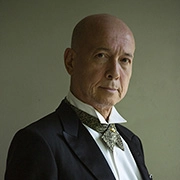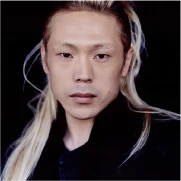



PROGRAM NOTES
Original Text by Toshi Kahara, Opera Critic
An ensemble drama about young artists in Paris in the first half of the 19th century: it may seem a distant story to those of us living in modern Japan. However, there is no other opera that anyone can relate to and sympathize with the characters as well as Puccini's "La Bohème" (premiered on February 1, 1896 at the Royal Theatre in Turin). The young people depicted there, who are poor but have plenty of time on their hands are youth itself, which transcends time, country, and region. Therefore, the audience is instantly assimilated into the story and is invited to sympathize with them and feel nostalgia.
Moreover, the entire opera is filled with great melodies, and every scene is a high-level fusion of lyricism and realism. The intonation of spoken words is skillfully musicalized, and even light and flames are replaced by delicate and lively sounds as if painted by an impressionist painter.
While full of dreams and hope, there is also despair lurking just a step away. It is a work like a starting point for anyone, and for performers, the starting point as an artist overlaps with it. This is probably why Michiyoshi Inoue, who announced his retirement from conducting at the end of December 2024, has chosen "La Bohème" as the last opera he conducts.
I will return to the unique charms of this production in a moment, but first I would like to introduce some of the features of this opera.
Synopsis
Based on the novel "Scenes of Bohemian Life" (1851) by French writer Henri Murger, the play was adapted into a script by Giuseppe Giacosa and Luigi Illica.
The first act starts in the attic where four young men live. When the poet Rodolfo is alone, Mimì, a seamstress who lives downstairs, comes to borrow a light, and the two fall in love. In the second act, Marcello, a painter, reunites with his ex-girlfriend Musetta on Christmas Eve at The Latin Quarter. In the third act, Mimì, who is suffering from lung disease, decides to leave Rodolfo, and the relationship between Marcello and the unfaithful Musetta is destroyed. The fourth act takes us back to the attic, where both Rodolfo and Marcello are unable to forget their ex-lovers. Musetta brings a weakened Mimì to the attic, where Mimì meets her end with Rodolfo.
Mimì, who became an innocent girl different from the original.
In fact, the original novel has no coherent plot, and the daily lives of the young people are described like an impressionistic diary. The two scriptwriters organized such a fragmented story into four concise and coherent acts. So Puccini was able to portray the daily lives of the young people through music like a miniature painting full of intimacy. However, the composer did not accept the scriptwriters' work without question. Rather, he thoroughly intervened in the creation of the script. In particular, he was insistent on the way in which the heroine, Mimì, was portrayed.
Mimì is considered to be the epitome of an innocent and sweet woman. Yet, the original novel describes that when Mimì is in a bad mood, she becomes as brutish as a wild beast, which may indicate her cruelty.
Another description says that she is "like a jewel box filled with bad emotions and stubborn natures," giving the impression that she is beautiful but wicked. Puccini, however, had no patience with such a heroine and instructed the scriptwriters to delete any portrayal of her as violent and to make the episode of a pure-hearted girl originally named Francine into Mimì's.
The script was finished by June 1893, but there Puccini again refused, asking that the entire third act, which takes place in the "courtyard of Musetta's house," should be deleted. In this act, Mimì is supposed to elope with her patron, the Viscount, but Puccini did not want any scene in which Mimì's innocence could be questioned.
Illica was upset with this request for removal, saying that Murger's Mimì is more complicated and that it is not "La Bohème" if all they do is love each other, fight, and die. Giacosa also said that he would no longer be involved in this work.
But if Mimì were not an innocent girl, would "La Bohème" have continued to move audiences for generations? Puccini's intuition was right, after all.
A Fusion of Naturalism and Impressionism
Puccini insisted on his opinion, and when the script was ready by June 1894, he began composing the music, which was completed about two months before the premiere.
The original novel was unstructured, but the structure was rearranged to include bright scenes (acts 1 and 2) followed by tragic scenes (acts 3 and 4). The entire story begins and ends in the attic, creating a symmetrical structure throughout the opera. Even during the fourth act, the hilarity of the first half and the tragedy of the second half are vividly contrasted. It is a splendid framework.
There, Puccini used leitmotifs (musical phrases that appear repeatedly to represent a particular person or situation) to skillfully portray the characters. And he used cutting-edge harmonic and orchestral techniques to depict the situation realistically and emotionally.
During this period, in addition to the naturalism of literature, Impressionist painting and Symbolist poetry influenced music. Puccini was influenced by naturalism, which depicted people realistically, but also by impressionism, which expressed moods and atmospheres colorfully. In fact, Debussy's influence, whose works are close to those of Impressionism and Symbolism, is strong, and this leads to the unique poetic sentiment of "La Bohème".
There are many things to listen for, but the main points are as follows:
Act I is notable first for Rodolfo's aria "Che gelida manina (Cold hands)". He raises his spirits as he introduces himself to Mimì, echoing a high C. Then Mimì sings "Si, mi chiamano Mimì(My name is Mimì) ", and tells her modest dream, which shows her character. Their emotions rise in the duet " O soave fanciulla(Oh, pretty lady)".
The second act opens with the sound of three trumpets. The whole act is performed by an ensemble including a chorus, expressing the liveliness of the city. Musetta's aria "Quando mén vò (When I go alone in the city)", sung in a waltz tone, is noteworthy.
The third act begins with the descending parallel fifths of the flute and harp, brilliantly depicting a cold February morning. Mimì bids farewell to Rodolfo with "Donde lieta uscì (From here she happily left)" followed by a sweet farewell duet, then a quartet involving a quarrel between Marcello and Musetta, leaving the audience breathless.
The fourth act opens with Rodolfo and Marcello reminiscing about the past in the duet "O Mimì tu più non torni(O Mimì, will you not return?)." After Mimì's appearance, it is all about listening, and when Rodolfo and she are alone, the melody of the love duet from the first act is recalled, "Sono andati?( Have they gone?)" says Mimì. There, the bass descends gradually from C to an octave below, showing her life fading away. The instrumentation of the motifs representing the past also gradually becomes smaller. After the chords indicate Mimì's death, the orchestra intensifies the funeral sound, and Rodolfo's mournful cry is overlaid.
Ideal Chemical Reactions between Michiyoshi Inoue and Kaiji Moriyama
The composer and the scriptwriters were in conflict, but at the same time, they trusted each other in their deepest souls. Giulio Ricordi, the publisher of the score, called them the "Holy Trinity" who created the masterpiece "La Bohème". Now, in this "La Bohème", a joint production by seven theaters, the two different talents are bumping into each other, trying to create an ideal chemical reaction.
Kaiji Moriyama, whom Inoue appointed as the director, is a dancer, but he is in charge not only of choreography but also of stage setting and costume design. In fact, he is a high-level artist in all of these areas, and since he is an artist who seems to integrate the characters of "La Bohème" into a single person, he is able to delve into each character in a unique way, including their physical expressions.
To cite one example, Léonard Tsuguharu Foujita, a painter who came to France from Japan in 1913 and attracted attention in Paris, is projected onto Marcello. How will the ensemble drama in Paris more than 100 years ago be depicted through the eyes of a real-life Japanese bohemian? How will the story of "La Bohème" be deepened there? Although a person who is not in the original story is projected onto the original character, this is quite different from the so-called "Regietheater," in which the whole setting of the story is changed. The world created by the "Holy Trinity" will be further explored through the addition of Moriyama's imagination and originality.
For Inoue, this is the last opera he will conduct, so his enthusiasm is unusual. He will be devoting all of his energy to drawing out everything from "La Bohème". Moriyama will be aware of this and will challenge Inoue. The chemical reactions that occur under such circumstances cannot be underestimated.


